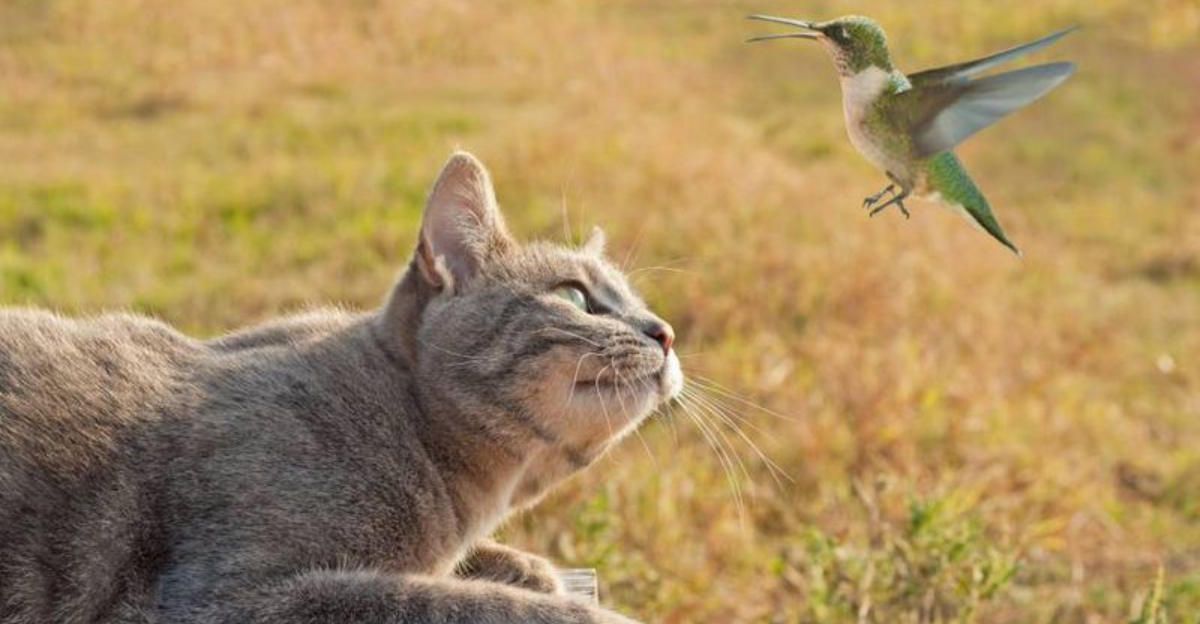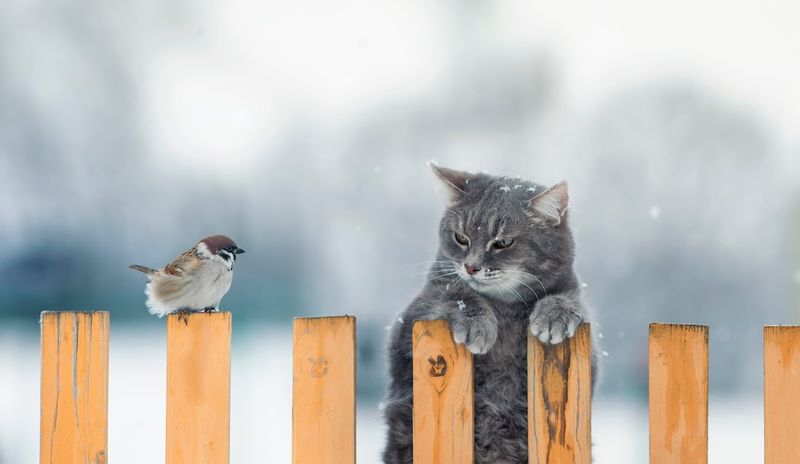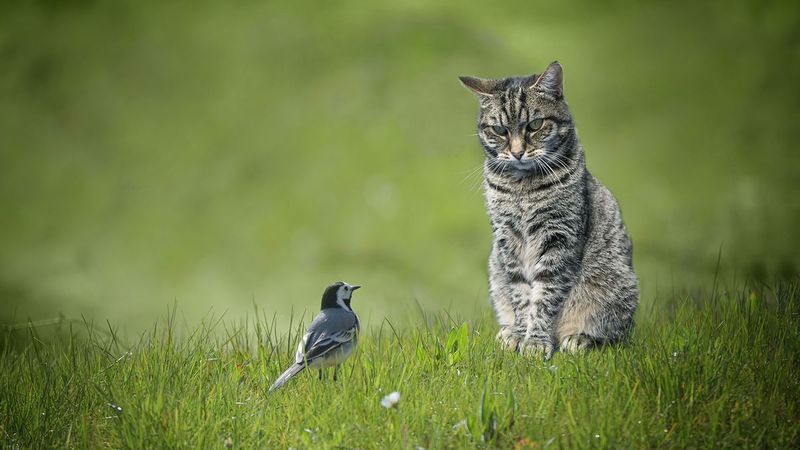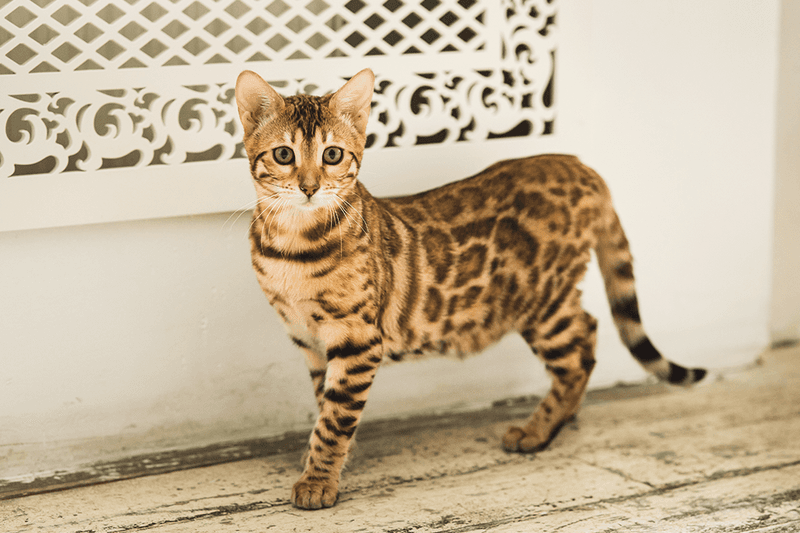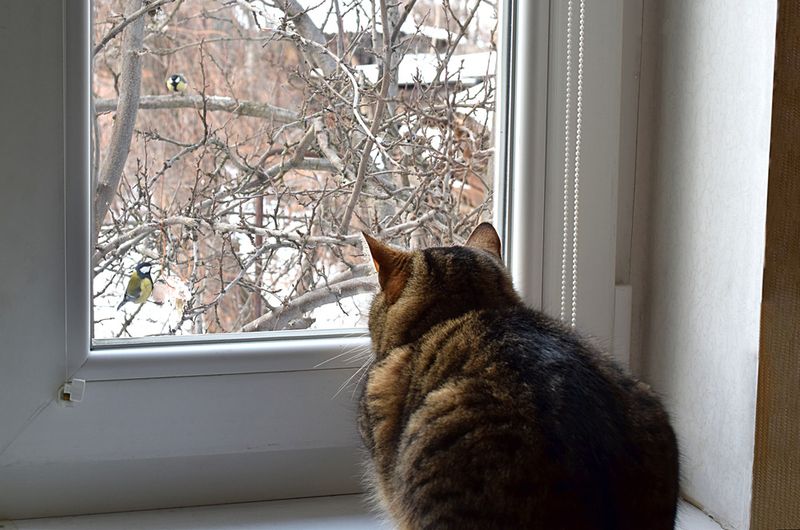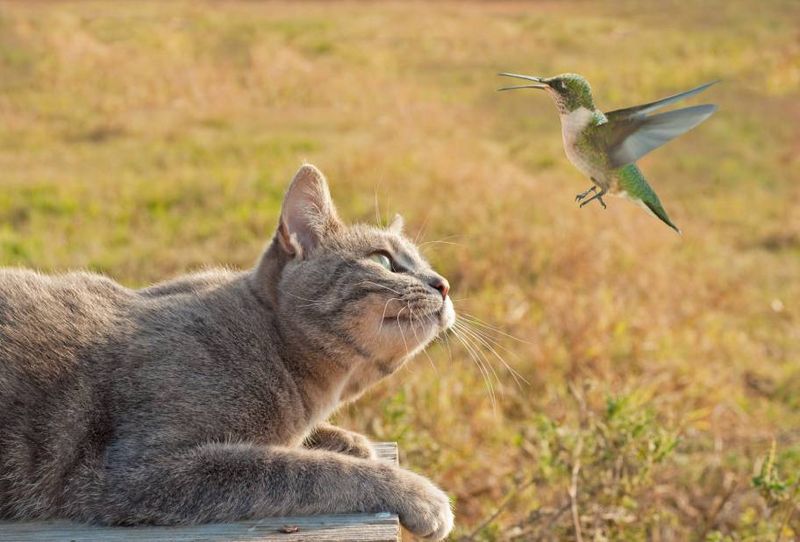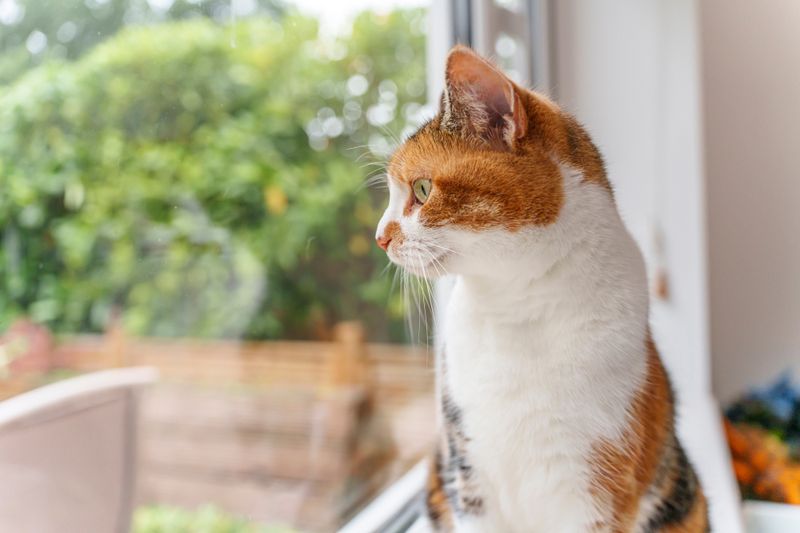📖 Table of Content:
Cats have long fascinated us with their mysterious behaviors and conflicting instincts. One particularly curious contradiction is how differently individual cats respond to birds. While some cats seem enamored with birds, watching them for hours with apparent admiration, others instantly shift into stealth mode, clearly seeing a feathered creature as a potential meal.
This range of reactions can baffle even experienced pet owners. A cat may chirp affectionately at a pet parakeet in one household, while in another, it might stalk pigeons outside the window with unblinking focus. The key to understanding these differences lies in a mix of instinct, personality, experience, and environmental factors.
By exploring the underlying reasons for this divide, we can better understand our feline companions and help ensure the safety and harmony of our homes—especially when birds are part of the equation. Here are seven explanations that shed light on why some cats love birds while others simply see them as dinner.
1. Instinctual Hunting Drive
At the core of every cat’s behavior is an ancient and powerful predator instinct. Even the fluffiest house cat shares DNA with fierce wild ancestors that relied on hunting to survive. When a bird flies by or flutters its wings, it taps into this deep-rooted hunting drive. A cat might crouch, stalk, and pounce, mimicking the techniques of a wild feline. These behaviors are not taught—they emerge naturally, especially in environments where hunting is part of the daily routine. Cats allowed outdoors or those who come from feral backgrounds are particularly prone to viewing birds as prey. It’s less about hunger and more about instinctual programming that turns every bird into a target.
2. Early Socialization
Formative experiences during kittenhood play a huge role in shaping how a cat views the world, including birds. A kitten raised in a household where birds are present and treated gently may grow to see them as part of the family. Familiarity can dull the sharp edge of a hunting instinct, replacing it with curiosity or even affection. When birds are normalized companions rather than strange, fluttering things, the cat’s response shifts accordingly. Cats that were never exposed to birds as kittens may be more likely to treat them as prey later in life. Gentle supervision and gradual exposure help foster a peaceful dynamic. Early socialization is key to nurturing harmony between feline and feathered friends.
3. Personality Differences
No two cats are exactly alike, and their individual temperaments greatly influence how they react to birds. Some cats are mellow and laid-back, more inclined to sunbathe than to stalk. These cats may watch birds with mild interest or even apparent friendliness. Others are energetic, assertive, and always on the hunt for stimulation, making birds a tempting outlet for their drive. Personality traits like curiosity, boldness, or timidity shape not just the behavior but the motivation behind it. A curious cat might want to interact or play, while an aggressive one may seek to dominate or catch. Understanding a cat’s core temperament provides insight into whether birds are seen as pals or prey.
4. Breed Tendencies
Different cat breeds come with distinct behavioral blueprints, including how likely they are to hunt. For instance, Bengals and Abyssinians are known for their high energy and relentless curiosity, making them more prone to chasing anything that moves. More docile breeds like Ragdolls or Persians, however, are typically more laid-back and less driven by a need to stalk. This doesn’t mean breed is destiny, but it does offer useful clues when interpreting behavior. Purebred cats often retain stronger tendencies aligned with their original breeding purpose. An owner’s awareness of their cat’s breed traits can help anticipate possible prey behaviors. Matching breed energy to household dynamics is especially important when birds are involved.
5. Boredom and Entertainment
Lack of stimulation can make even the most relaxed cat find excitement in the flutter of wings. Birds offer dynamic visual and auditory entertainment that can brighten a cat’s otherwise idle day. When a cat watches a bird, it may not be fueled by hunger or malice, but simply by curiosity and the thrill of movement. This is particularly true for indoor cats, who often lack the variety of sensory experiences found outdoors. In such cases, birds behind a window or in a cage become living TV shows—stimulating, harmless, and endlessly fascinating. A mentally engaged cat is less likely to act out of boredom, so enriching their environment is essential. Sometimes, what looks like hunting is really just a desperate need for fun.
6. Previous Experiences
A cat’s history with birds can deeply inform its future responses. If a cat has successfully caught a bird before, the behavior may be reinforced as rewarding and instinctively correct. Positive outcomes—like the thrill of the chase or the taste of success—encourage repeat behavior. On the other hand, a negative or neutral experience may temper their drive. Cats are fast learners, and even a single interaction can imprint a lasting behavioral pattern. Rescue cats or strays often bring with them a history of independent survival, which may include hunting birds for sustenance. That learned survival tactic can linger, even in a new, safer home environment. Past encounters, good or bad, always leave a mark.
7. Scent and Sound Triggers
Sensory cues—especially sound and smell—play a powerful role in shaping a cat’s reactions. High-pitched chirps, rapid flutters, and erratic movements mimic prey behaviors that immediately attract feline attention. However, if those same cues become associated with calm moments or rewards, a cat might grow to respond more softly. In multispecies households, cats often learn to distinguish between “family birds” and “outside prey” through scent. Over time, familiarity with a bird’s smell and sound can override instinctive aggression. Associative learning allows cats to build new frameworks around familiar creatures. In the end, how a cat responds to these cues depends on the context they’ve come to know.
